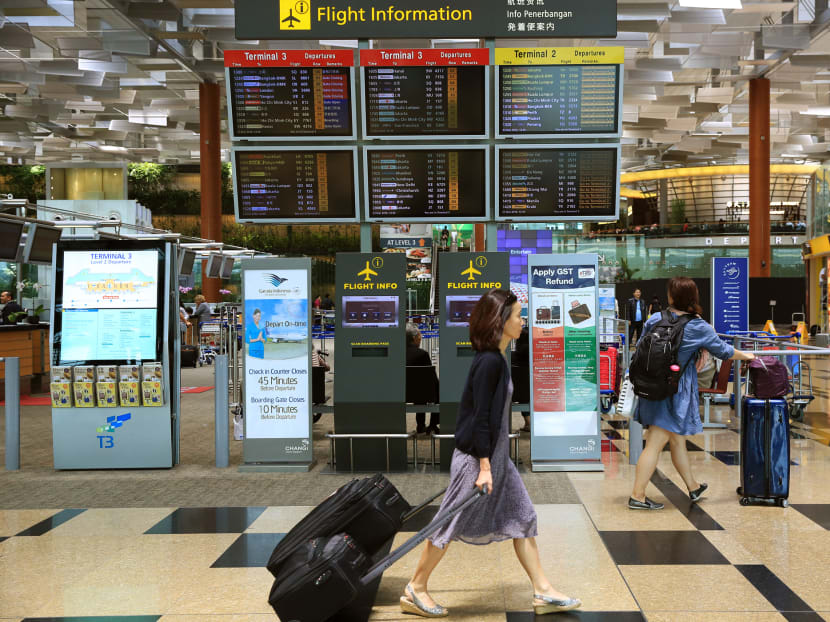Changi Airport and EDB launch S$50m ‘living lab’ project to test new tech
SINGAPORE — Cleaning robots and self-driving vehicles to ferry passengers between Changi Airport terminals might become a common sight, in a S$50 million bid to turn the airport into a “living lab” for new ideas.
SINGAPORE — Cleaning robots and self-driving vehicles to ferry passengers between Changi Airport terminals might become a common sight, in a S$50 million bid to turn the airport into a “living lab” for new ideas.
Under the Living Lab programme, Changi Airport will be working with partners such as start-ups and other companies to develop, test and adopt new solutions in a live airport environment.
For example, sensors and cameras are being used to track the number of people at taxi queues at the terminals, which can provide estimated waiting times and alert taxi drivers on the demand. And trials with cleaner robots started last April.
Changi Airport Group (CAG) and the Economic Development Board yesterday signed a Memorandum of Understanding to drive such efforts over the next five years.
Solutions are being sought in four areas: Automation and robotics, data analytics, security technologies and smart infrastructure management such as sensors and Internet of Things. For example, technology could strengthen security while reducing the stress of undergoing security clearance for passengers.
Speaking at the launch, CAG chief executive officer Lee Seow Hiang referred to global challenges and the tight labour market as an impetus for innovation. Geo-political changes mean that Changi Airport needs to look at new safety and security measures, and many start-ups are looking at these issues, he said. “There’s a fundamental need, not just Changi Airport...we are small, vulnerable,” he added, referring to Singapore.
In the meantime, key technology is evolving — cheaper and more powerful sensors, as well as data analytics and artificial intelligence — while Singapore boasts a vibrant start-up ecosystem. With 60 million passenger movements annually, technologically-sophisticated customers, and retail sales of over S$2 billion, Changi Airport will be a test-bed “not found anywhere else in Singapore”, Mr Lee said.
The trial on taxi queue analytics started in September last year, with CAG initially testing out various technologies to track passenger traffic at all six taxi stands in the three main terminals.
“What we’re hoping to do is to best match supply and demand, so this data will allow us to say... there’s currently this number of passengers waiting to get a cab...how long is the wait, should I then choose other forms of ground transportation that will be faster? This will help us very much during peak periods especially,” said Mr Jayson Goh, managing director of Airport Operations Management.
Eventually, using the data, CAG could even work with the taxi companies to alert them of the demand for taxis, he added.







